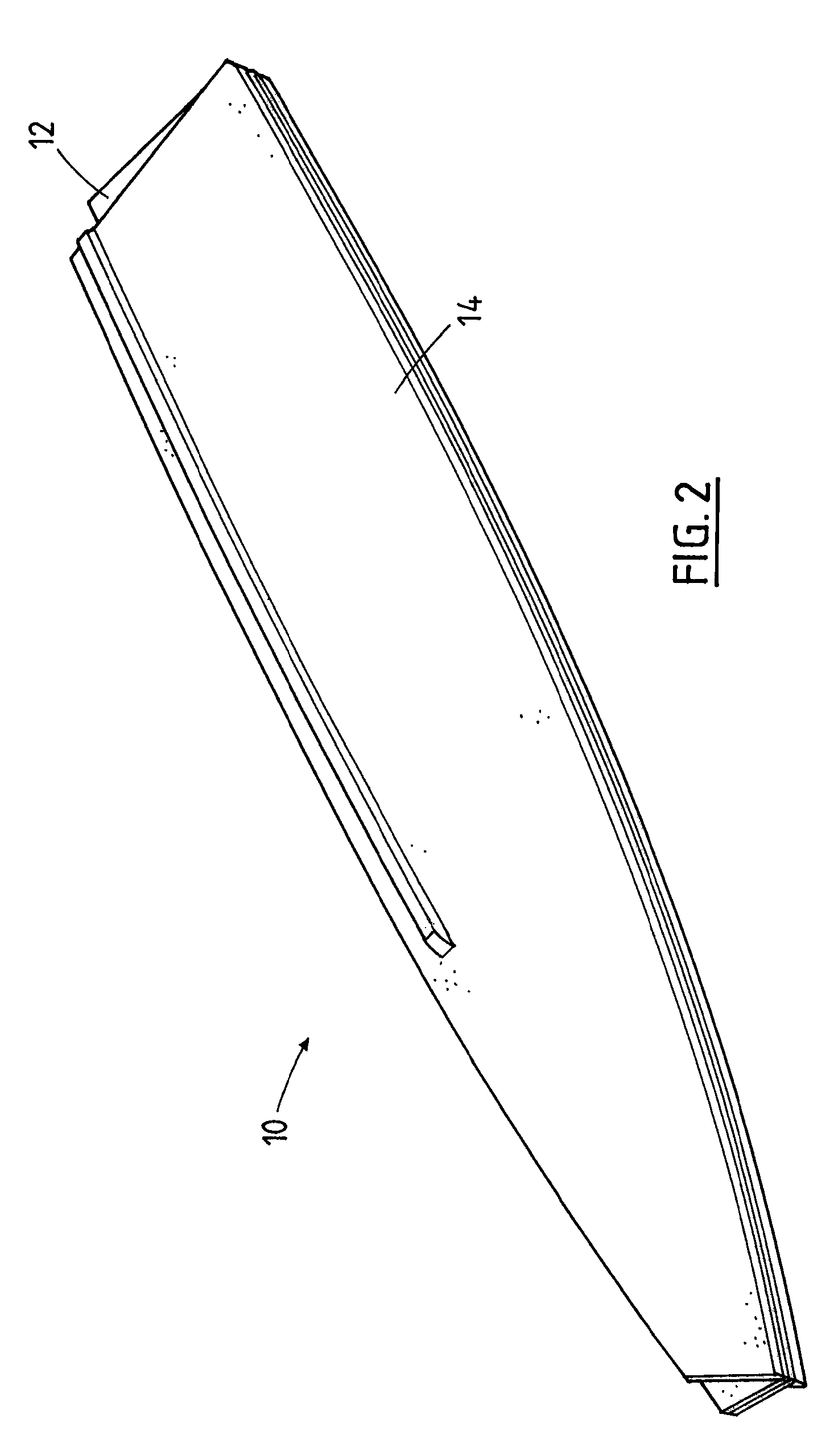Bracing for collapsible boat
a technology for boats and ribs, applied in special-purpose vessels, vessel construction, transportation and packaging, etc., can solve the problems of not being able to include ribs in the same way, not being able to resist twisting in many collapsible boats, and being difficult to manipulate. , to achieve the effect of minimising damage to other boats
- Summary
- Abstract
- Description
- Claims
- Application Information
AI Technical Summary
Benefits of technology
Problems solved by technology
Method used
Image
Examples
Embodiment Construction
)
[0041]Referring to FIGS. 1 to 7, there is shown a collapsible boat hull 10 comprising a pair of side panels 12, a pair of bottom panels 14, a stern member 16, and a bow member 18. Each bottom panel 14 has a first continuous hinge 20 along an inner edge thereof, and a second continuous hinge 22 along an outer edge thereof. In the embodiment of the drawings, each of the first continuous hinges 20 is connected to respective first and second sides of a centrally disposed keel member 24. In an alternative keel-less embodiment of the invention, the two bottom panels 14 are connected along a single common first continuous hinge 20.
[0042]Each bottom panel 14 is connected to a corresponding side panel 12 along its second continuous hinge member 22. Spines of each of the first and second continuous hinge members 20,22 have resilient flexibility along respective longitudinal and transverse planes thereof, thereby facilitating the bottom and side panels 14, 12 to be collapsed and folded from a...
PUM
 Login to View More
Login to View More Abstract
Description
Claims
Application Information
 Login to View More
Login to View More - R&D
- Intellectual Property
- Life Sciences
- Materials
- Tech Scout
- Unparalleled Data Quality
- Higher Quality Content
- 60% Fewer Hallucinations
Browse by: Latest US Patents, China's latest patents, Technical Efficacy Thesaurus, Application Domain, Technology Topic, Popular Technical Reports.
© 2025 PatSnap. All rights reserved.Legal|Privacy policy|Modern Slavery Act Transparency Statement|Sitemap|About US| Contact US: help@patsnap.com



